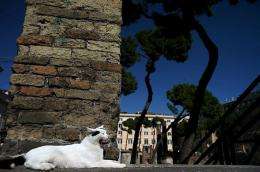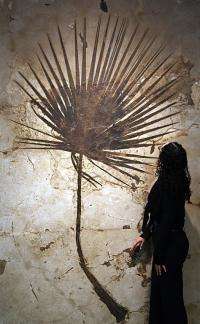Climate flux matched Europe's social rise and fall

Ancient tree rings show links between climate change and major events in human history, like migrations, plagues and the rise and fall of empires, said a study this week in the journal Science.
Moist, balmy temperatures were seen during prosperous Medieval and Roman times, while droughts and cold snaps coincided with mass migrations.
To match the environmental record with the historical one, researchers looked at more than 7,200 tree fossils from the past 2,500 years, said lead author Ulf Buntgen of the Swiss Federal Research Institute for Forest, Snow and Landscape.
Oak rings are sensitive to changes in precipitation, and can show changes according to what was happening in the environment.
"The rise and fall of past civilizations have been associated with environmental change, mainly due to effects on water supply and agricultural productivity, human health and civil conflict," said the study.
"Wet and warm summers occurred during periods of Roman and Medieval prosperity," said the study which looked at tree samples from Europe and other parts of the world.
"Increased climate variability from (around) AD 250-600 coincided with the demise of the Western Roman Empire and the turmoil of the Migration Period."

They could also glean signs about what was happening from changes in how many trees were being cut.
"Reduced tree harvesting (around) AD 250-400 coincides with the biggest CE (central Europe) historical crisis, the Migration Period, a time marked by lasting political turmoil, cultural change and socio-economic instability," it said.
"Increasing timber harvest for construction is represented by abundant felling parallel to socio-economic consolidation from the 6th to the 9th centuries."
The study said "unfavorable climate may have contributed to the spread of the second plague pandemic, the Black Death, which reduced the CE population after AD 1347 by 40-60 percent."
Researchers also noted that a sharp decline in North American temperatures around the same time saw an "abrupt desertion of former Greenland settlements."
Technological advances have made the modern human population less vulnerable to environmental changes to a certain extent, the study said.
However we are "certainly not immune to the predicted temperature and precipitation changes, especially considering that migration to more favorable habitats as an adaptive response will not be an option in an increasingly crowded world."
(c) 2011 AFP















